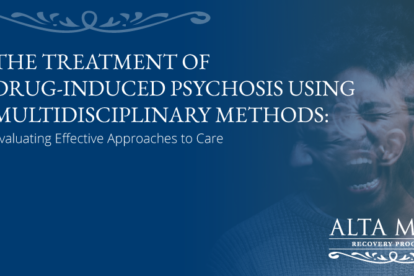
Mixing Fentanyl With Other Drugs
Fentanyl is a potent opioid drug, and although it is a legal prescription, it is increasingly found in the illegal drug market. Often it is found mixed with other drugs, including Xanax, cocaine, and oxycodone. Alone, fentanyl is dangerous and can cause fatal overdoses when misused. In combination with other drugs, the dangers are even greater and the risk for overdose much higher. Addiction is another risk of using fentanyl with other drugs, but with long-term treatment, recovery is possible.
Fentanyl is an opioid painkiller that is related to, but much more potent than, drugs like oxycodone, hydrocodone, and morphine. It is even more potent than the illicit opioid heroin. Fentanyl is prescribed for patients with severe pain, often cancer patients. While it can provide much-needed relief for these patients, fentanyl is very dangerous when misused. Statistics show that overdose deaths from opioids have increased significantly in the last few years and that much of that increase can be blamed on fentanyl.
Fentanyl is increasingly being found in illicit drugs, often drugs that are counterfeits. Illicit Xanax or oxycodone, for instance, is often laced with fentanyl. While many people are suffering the consequences from unknowingly using fentanyl, others intentionally mix it with alcohol, benzodiazepines, stimulants, and other substances to increase the high and for other reasons. This is risky behavior and greatly increases the risk of overdose. It can also increase the risk of addiction.
Fentanyl and Xanax
Fentanyl has been found in counterfeit and illicit Xanax pills. Xanax is a benzodiazepine, a sedative prescribed to treat anxiety disorders. Some people misuse Xanax and similar drugs either to self-medicate in an attempt to cope with the negative feelings associated with anxiety or just to get the sense of relaxation that benzodiazepines trigger.
Officials have found fake Xanax pills on the illicit marketplace and many of these have been laced with fentanyl, making for a dangerous combination. Any illegally purchased benzodiazepines come with the risk of containing fentanyl. While many people are using fentanyl without realizing it, through these contaminated pills, some people intentionally combine fentanyl with benzodiazepines in an attempt to enhance the high caused by the opioid.
The dangers of combining fentanyl and Xanax are multiple. Many people using contaminated illicit Xanax are not opioid users. The addition of fentanyl could be particularly risky because these users have no tolerance to opioids. Just one dose that is too high could be fatal. For anyone using Xanax with fentanyl, whether intentionally or not, there are several risks:
- An increased risk of overdose, including fatal overdoses
- Additive effects of decreased respiration
- Extreme sleepiness and possible loss of consciousness
- Increased likelihood of addiction
- Exacerbated withdrawal symptoms
- Increased risk of contracting communicable diseases
The risks of combining these two drugs are largely tied to the fact that both are central nervous system depressants. The additive effects of combining them increase all the potential risks of using either alone. The risks are high enough that the U.S. Food and Drug Administration issued its strongest warning against using prescription opioids and benzodiazepines at the same time.
Fentanyl and Other Opioids
Xanax is not the only prescription drug that can be found in counterfeit form and laced with fentanyl. Opioid painkillers like oxycodone, morphine, and hydrocodone are also sometimes counterfeited and made with fentanyl for sale on the illegal marketplace. For people seeking prescription narcotics illegally, there is always a risk that the pills will contain fentanyl. Because fentanyl is more potent than the other opioids, if someone takes it unknowingly, the risk they will take enough to accidentally trigger an overdose is very high.
Fentanyl is an opioid, so when it is combined with other opioids the effects are additive. While someone may intentionally combine these drugs to get a greater high, many do so without realizing it. The added effects include increased sedation and drowsiness, increased impairment in motor function, and an increased depression of respiration, which significantly increases the risk of a fatal overdose.
According to the Drug Enforcement Administration, over 13,000 separate samples of illicit drugs in 2015 contained fentanyl. This was a big increase that reflects the degree of the problem in the U.S. The number of samples that tested positive for fentanyl in 2014 was 7,864, and in 2013 it was just 934. Much of the increase is accounted for by counterfeit pills sold as oxycodone and other opioid painkillers.
Hope is Just a Phone Call Away
866-922-1350Fentanyl and Cocaine
In 2017, many city and state officials began warning communities of the risk that cocaine could be laced with fentanyl. While it had already become commonplace for heroin to contain fentanyl, the addition of the opioid to cocaine is a newer phenomenon. In Rhode Island, for instance, the state’s Department of Behavioral Healthcare, Developmental Disabilities and Hospitals issued a warning in May of 2017 that overdose deaths from cocaine were on the rise and that fentanyl was implicated. An analysis of samples of illicit drugs in that state found that cocaine was 77 percent as likely as heroin to be laced with fentanyl.
Other state and local governments have issued similar warnings in the last couple of years, including Cincinnati and Vancouver. There are multiple reasons why mixing cocaine and fentanyl is so dangerous and increases the risk of overdose. One is that cocaine users are more often recreational drug users who have no tolerance for opioids. Fentanyl, a very potent opioid, can easily cause an overdose in this population. Most people using cocaine recreationally have no intention of using fentanyl and have no way of knowing that the drug has been laced with it.
Many people who end up using cocaine or other stimulants with fentanyl do not do so intentionally. However, some do it on purpose, to amplify the euphoric sensation from each drug while also attempting to decrease some of the negative effects caused by each. Fentanyl is a depressant and cocaine is a stimulant, so some users believe the two drugs together may cancel each other out while keeping the high. This is a dangerous combination for many reasons. It can increase the low or the crash a user experiences after the drugs wear off, and it may also increase the risk of depression, anxiety, and suicidal thoughts while increasing the risk of addiction.
Fentanyl and Alcohol
Unlike drugs, there is little risk that alcohol will come laced with fentanyl. However, some people do consume them together intentionally for a variety of reasons. As with benzodiazepines like Xanax, people who use this mix may be seeking a more potent high. The combination is extremely risky because alcohol and fentanyl both act to depress the central nervous system.
Because they both act like depressants, many of the side effects of fentanyl and alcohol are the same or similar. Both cause impaired coordination and judgement, drowsiness, and sedation. All of these are increased when the two substances are used together, increasing risks of harm from accidents. The bigger risk, though, is that both substances slow respiration, so when used together the risk of dying from an overdose is increased. Additionally, both substances reduce the coughing reflex, so choking is a real risk and can be fatal.
Recovery From Fentanyl Overdose and Addiction
The two biggest risks of mixing fentanyl with other drugs are overdose and addiction. An overdose of fentanyl can be fatal and should be treated as a medical emergency. A dose of naloxone, an opioid overdose antidote, can reverse the effect of fentanyl and save a person’s life if administered in time. The other risk of misusing this drug, addiction, takes much longer to treat.
Treating an addiction to fentanyl and other drugs requires serious, committed, and long-term care. Overcoming addiction to any opioid is very challenging because these drugs hijack the brain and make changes that cause withdrawal and cravings and make stopping use without assistance nearly impossible. The most effective solution is to engage in professional, residential addiction treatment.
Treatment for fentanyl addiction usually includes a combination of behavioral therapies with medications that reduce withdrawal and cravings. While in treatment an individual learns to recognize what led to substance abuse and addiction and how to make positive changes to resist the urge to relapse and use again. In addition to therapy and medication, a comprehensive treatment plan also includes group support, stress and coping strategies, family therapy, and alternative therapies.
Mixing fentanyl with other drugs can be deadly and is accounting for a major spike in overdose deaths in recent years. People who misuse drugs are at a serious risk of accidentally taking fentanyl and need to be aware of the risks. For those who are prepared to stop using and get sober, residential treatment for opioid addiction is the best option for a safe and lasting recovery.






